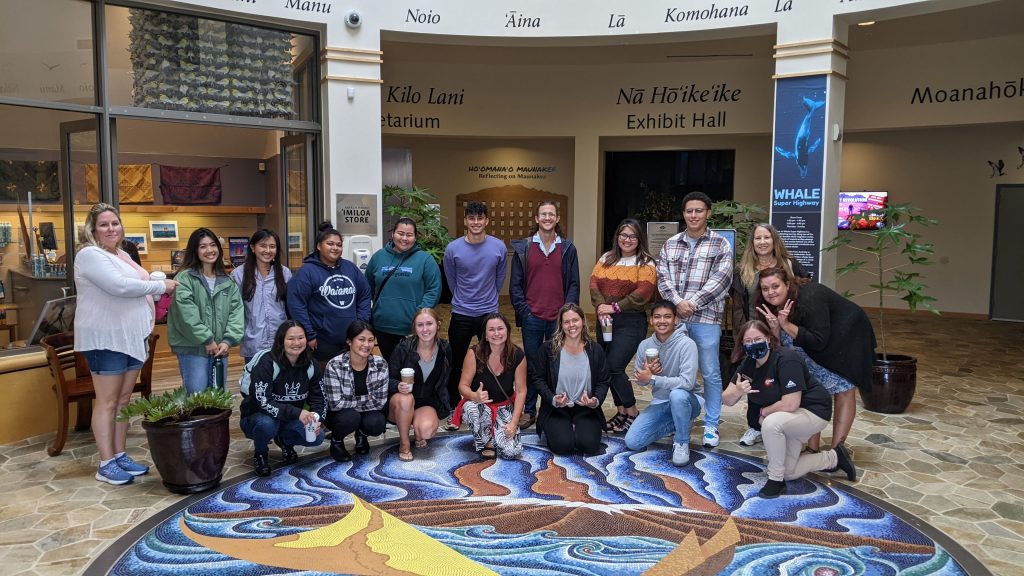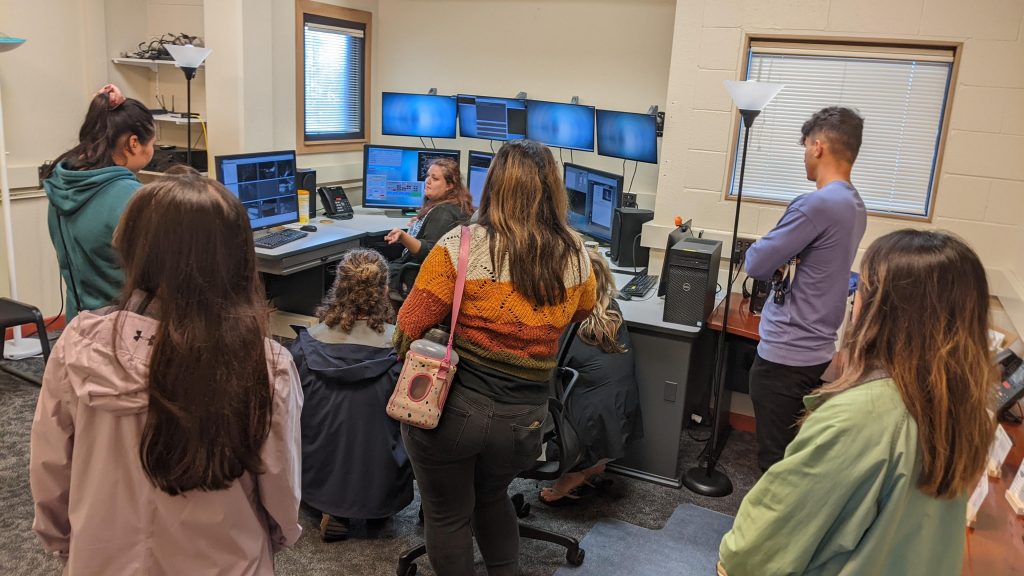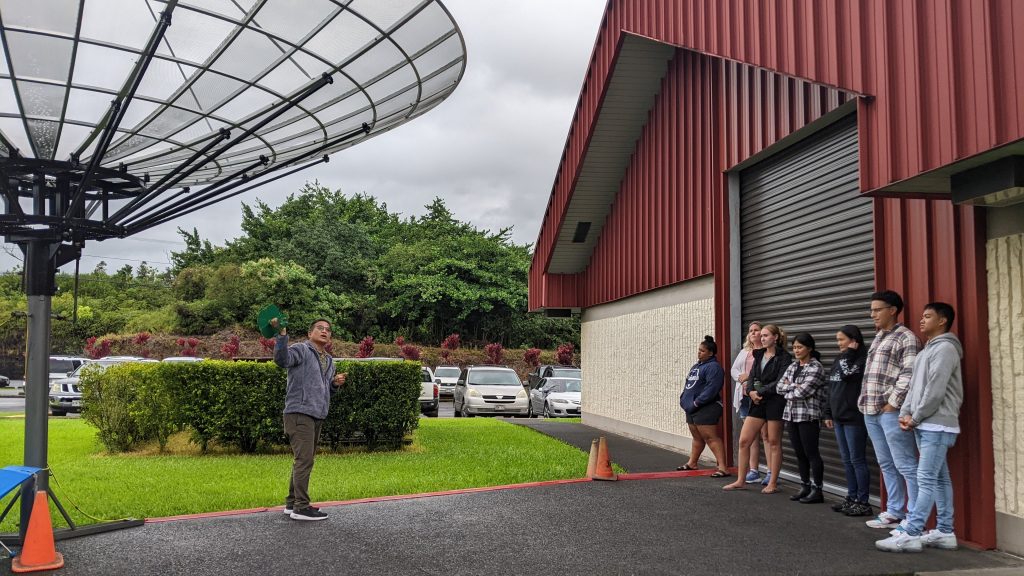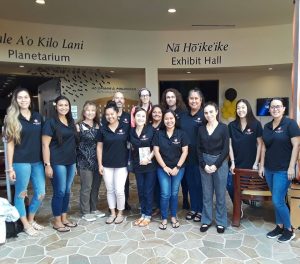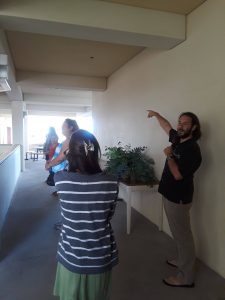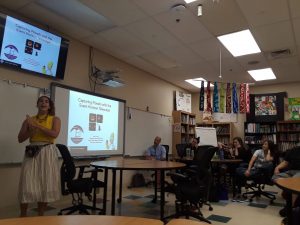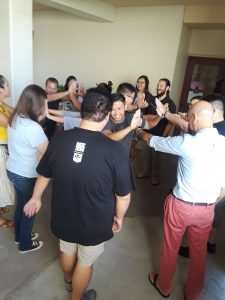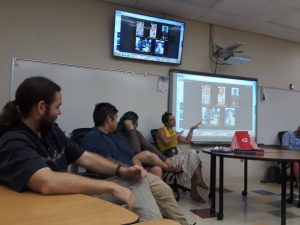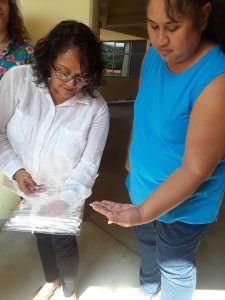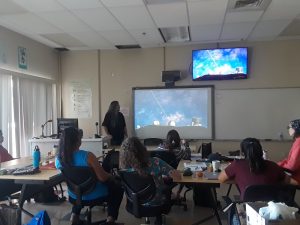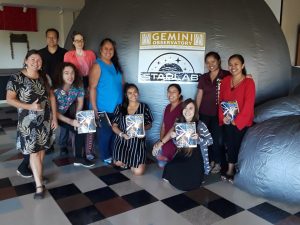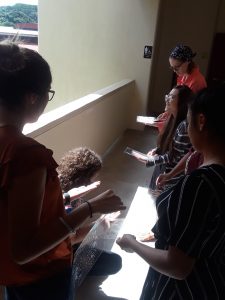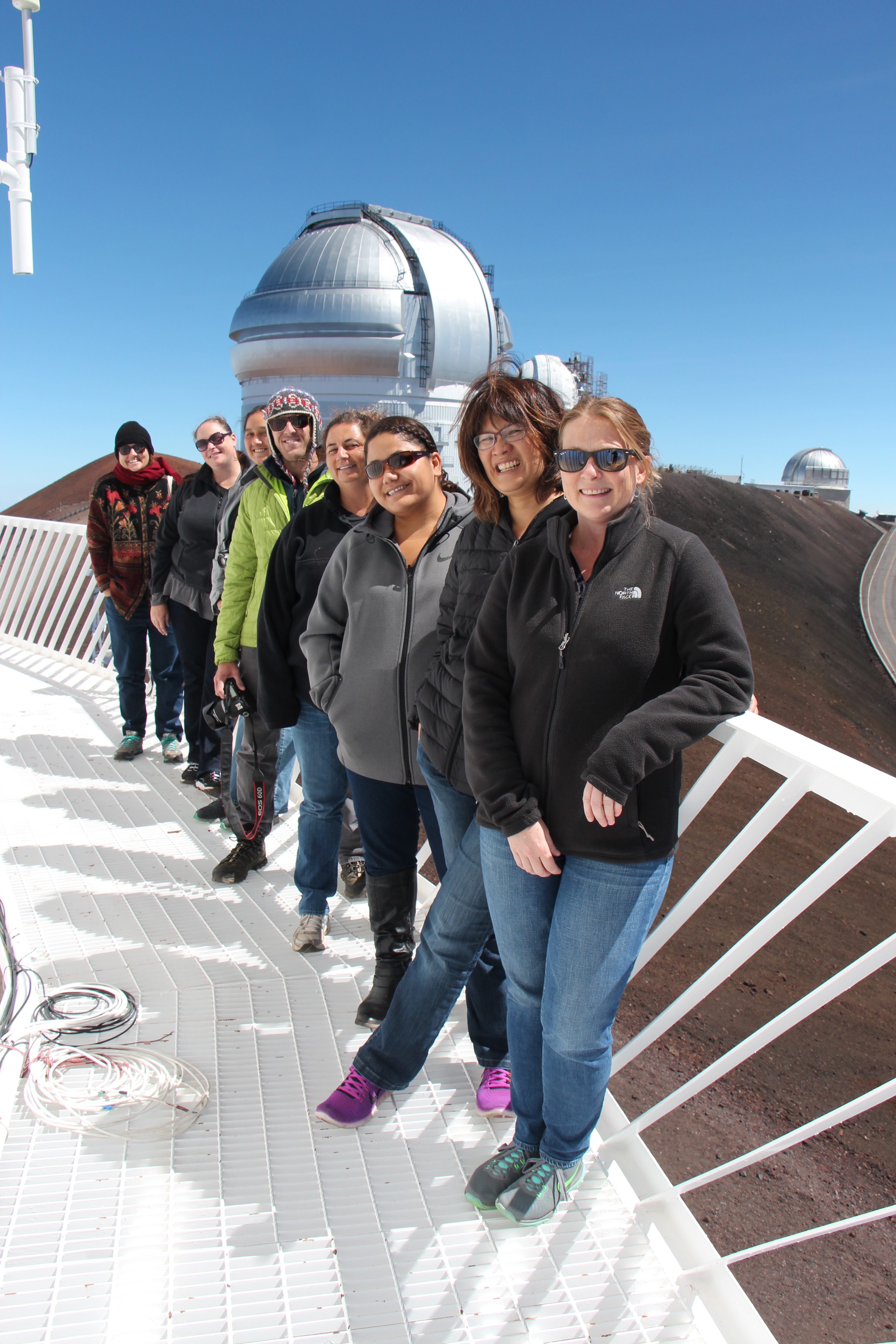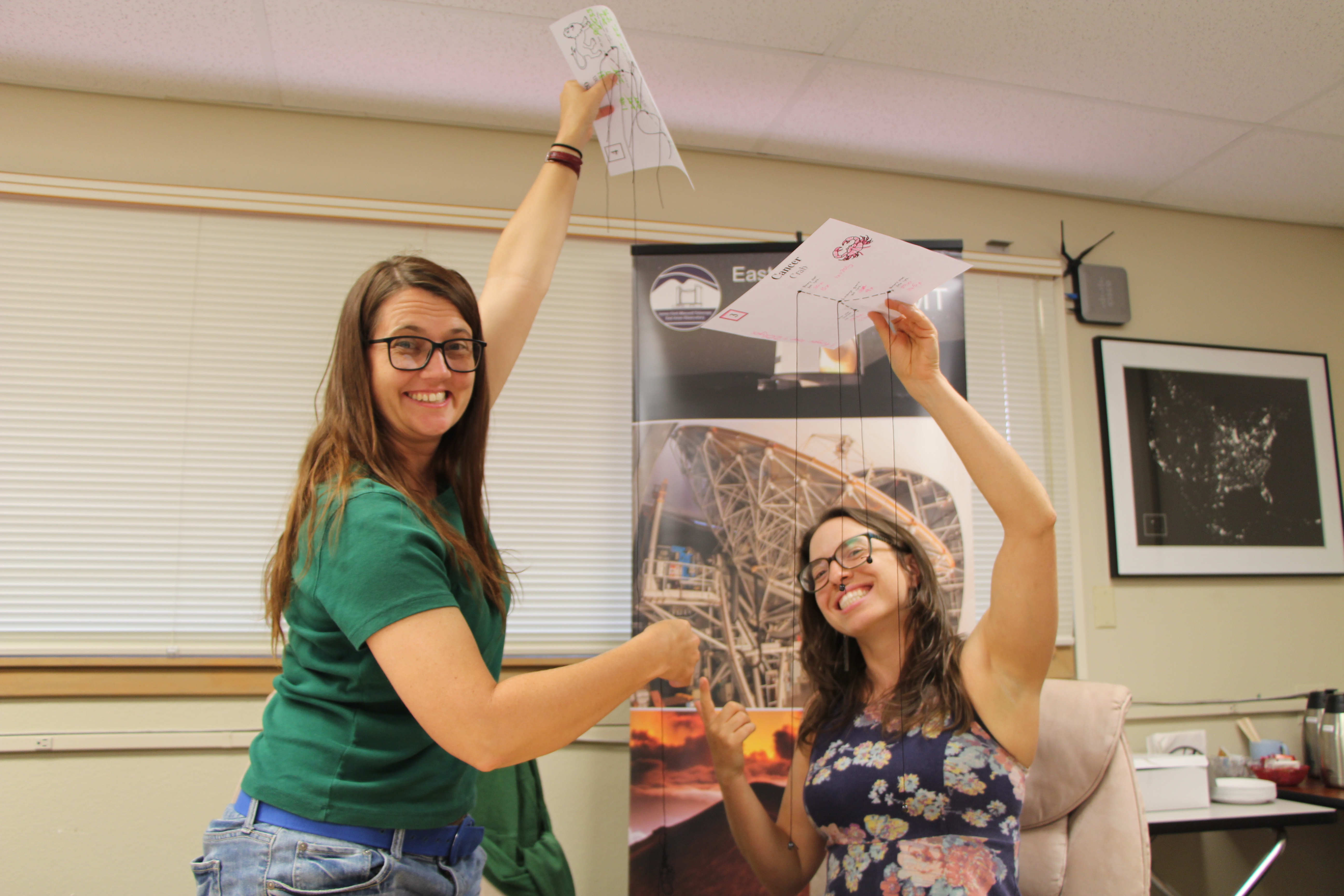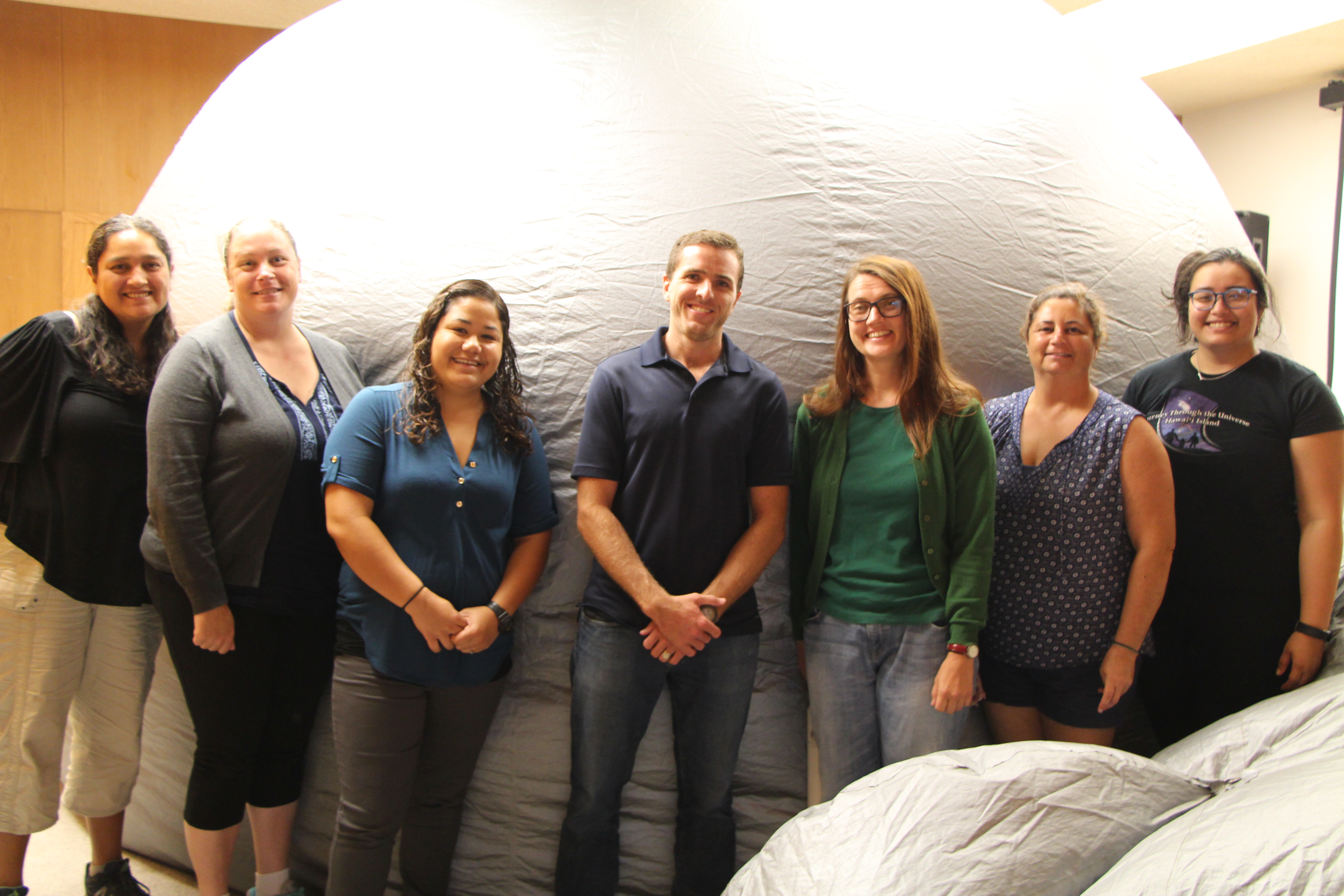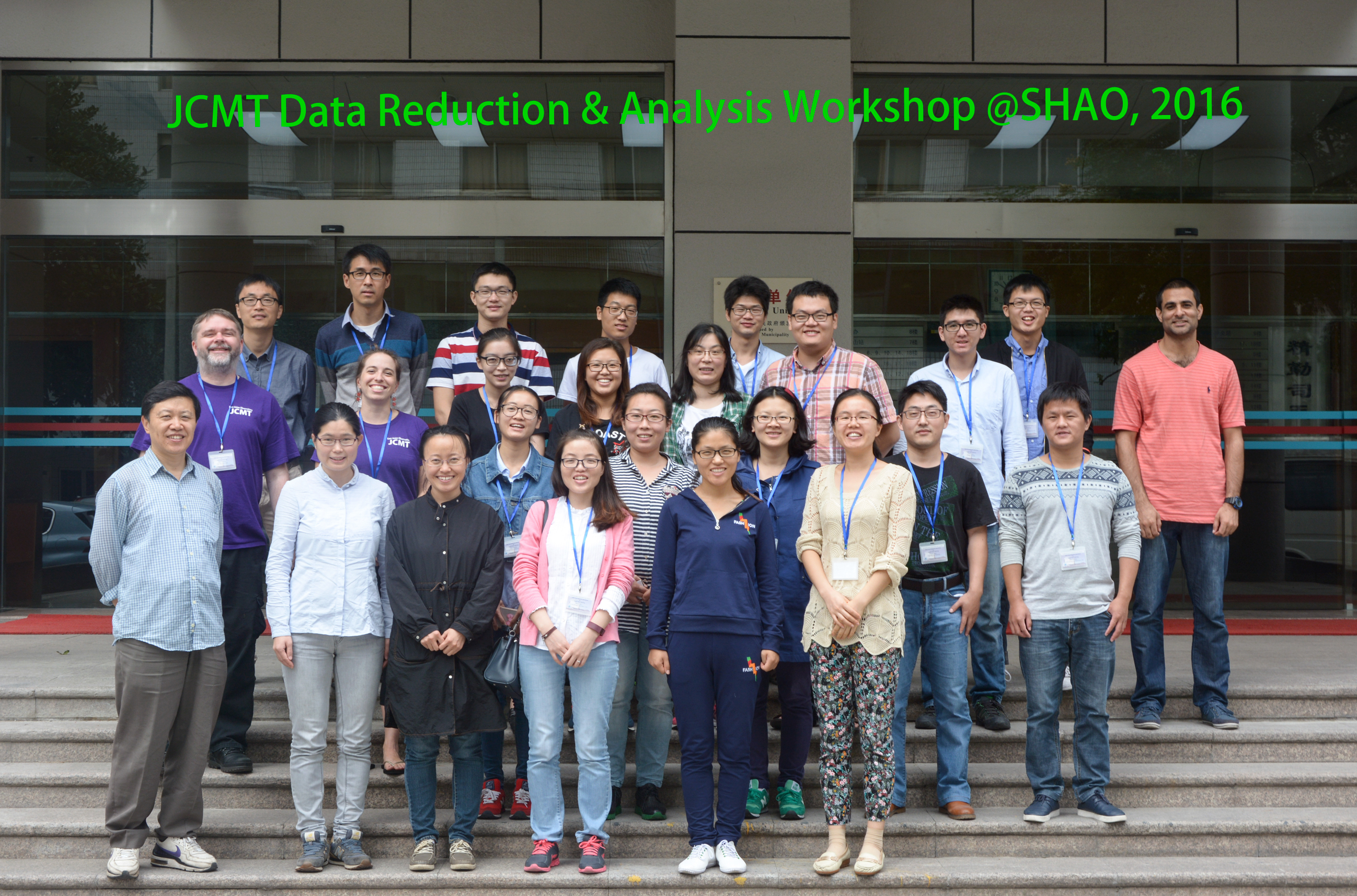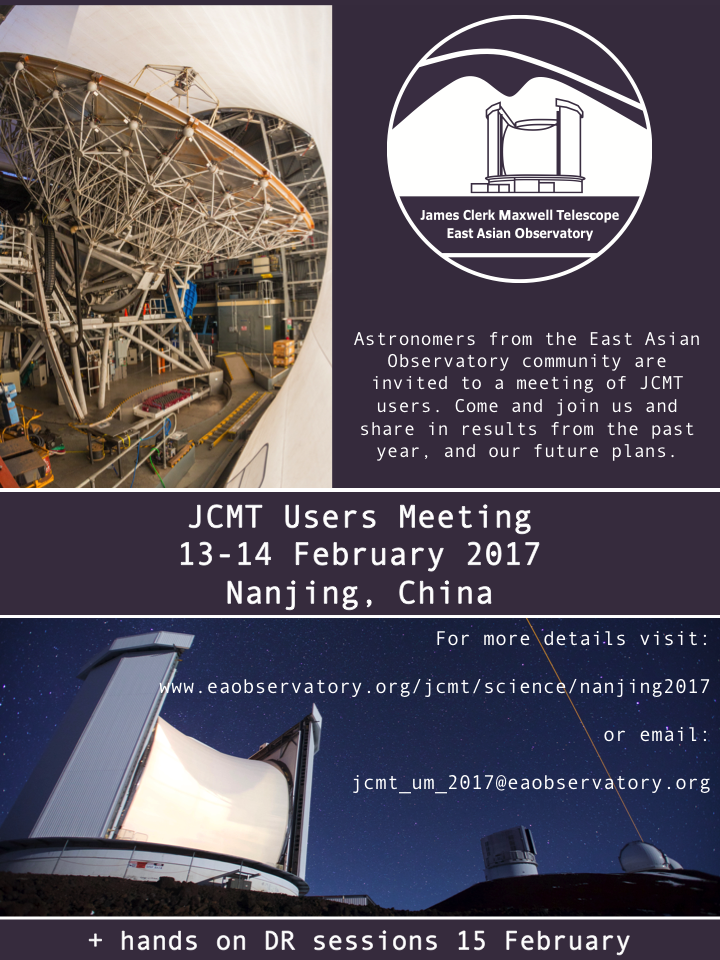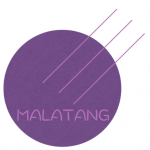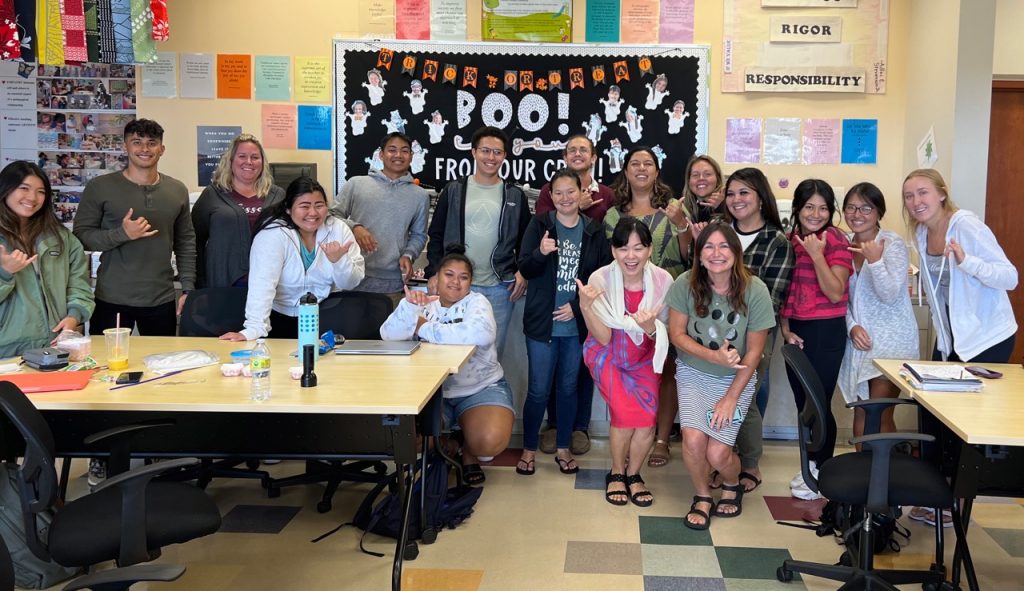
The Maunakea Wonders Teacher Workshop classroom visit on October 28th included students in the UH Hilo Master’s in Teaching program with presenters Yuko Kakazu, Leinani Lozi, and Callie Matulonis.
The 2022 Maunakea Wonders Teacher Workshop took place on October 28th and November 4th adding success to a collaboration with the University of Hawaiʻi that has reached more than 100 participants since it began in 2017.
On October 28th, guest speakers Callie Matulonis (EAO/JCMT), Leinani Lozi (TMT), and Yuko Kakazu (NAOJ) provided enthusiastic and engaging presentations to 14 soon-to-be teachers at UH Hilo in the Master’s in Teaching Program. Presentations included “An Introduction to Maunakea Wonders, MKAOC Opportunities, and Hawaii Discovers Science Highlights”, “Hawaiian Navigational Starlines and Moon Phases”, and “Hands-On Engaging Astronomy Activities.”
On November 4th, participants were treated to a private planetarium show at the ʻImiloa Astronomy Center before visiting the East Asian Observatory headquarters. At EAO, participants split into two groups and visited stations set up to learn about our JCMT Remote Operations Control Room with Telescope System Specialist Jasmin Silva (EAO/JCMT), and also shown the Fast Radio Burst Dish with Derek Kubo (SMA). Afterwards, we had an informal career-panel talk story session with EAO staff from all departments over pizza!
We look forward to our future collaborations with UH Hilo and hope that these soon-to-be teachers reach out to us as a resource throughout their teaching careers.




